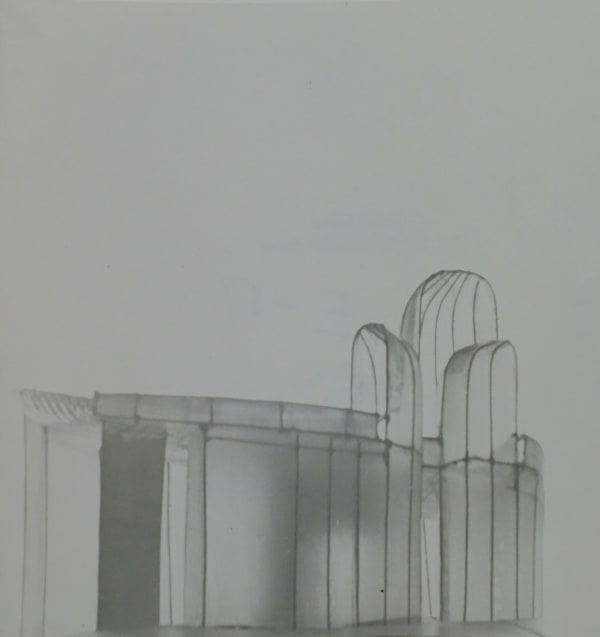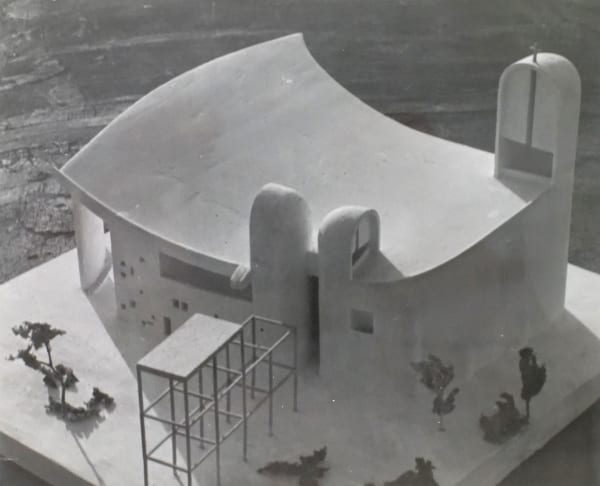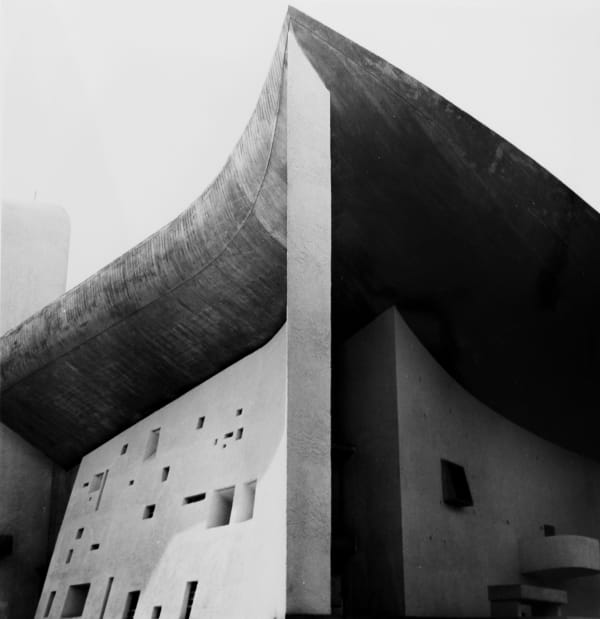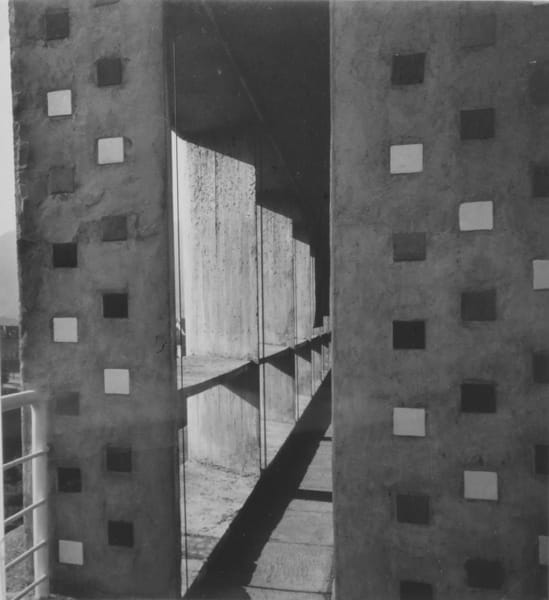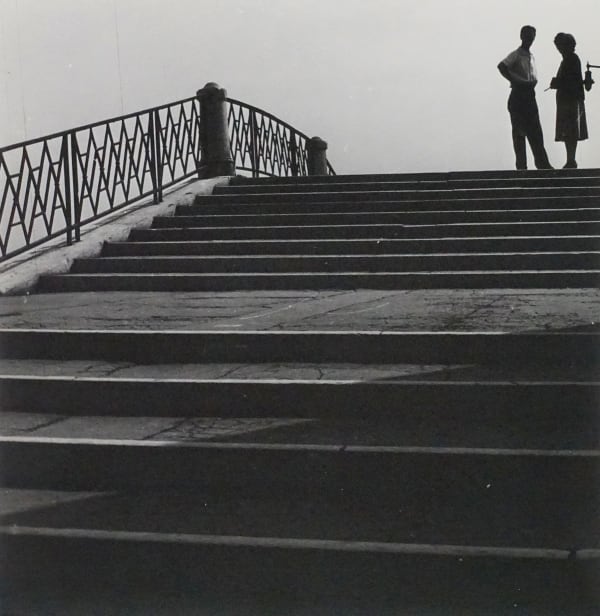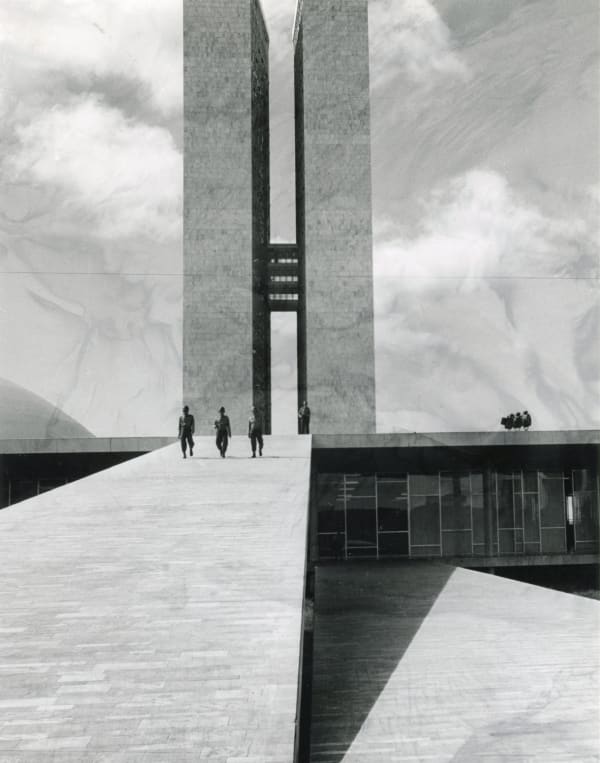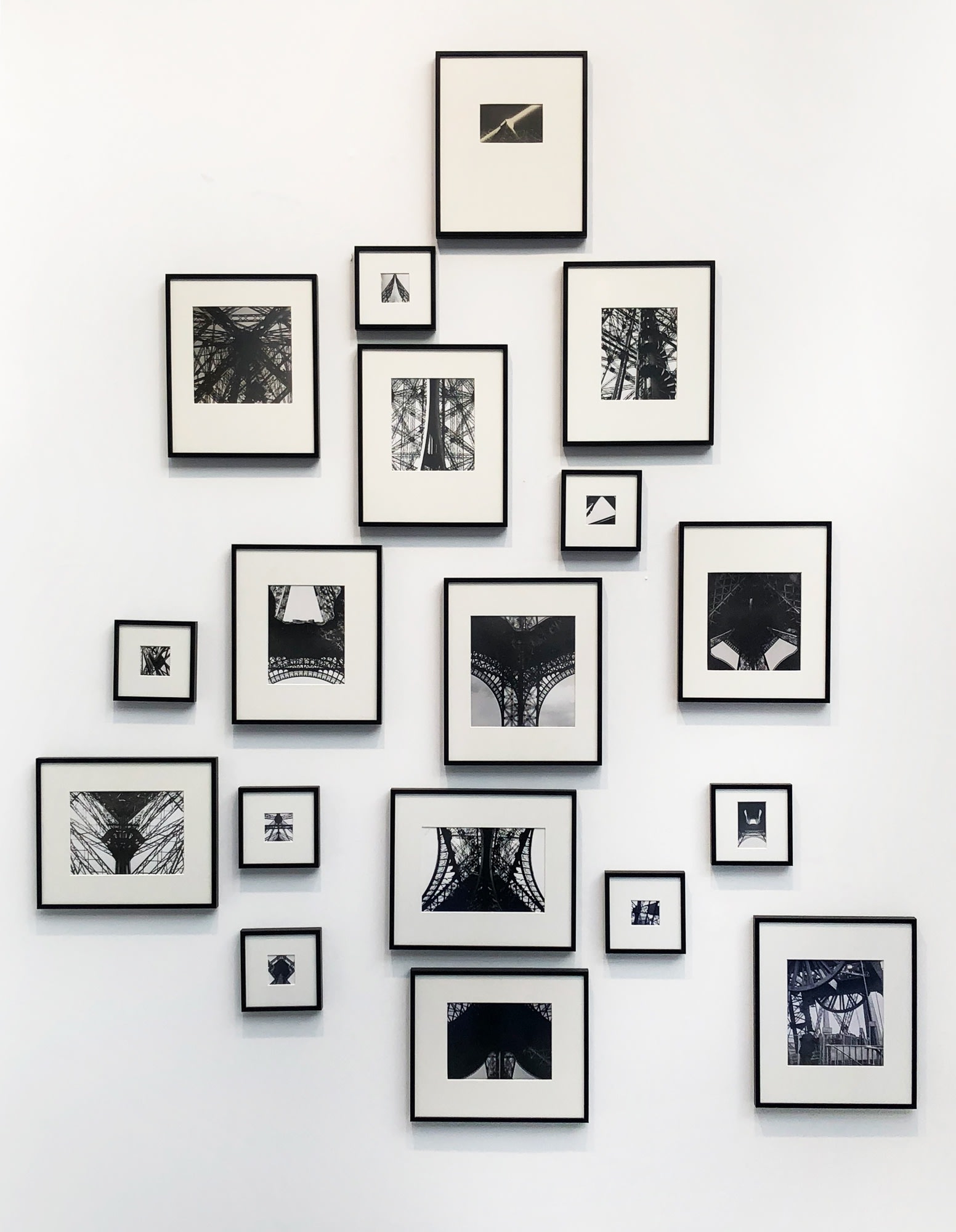-
With special thanks to Judith Hervé.
‘Lucien Hervé’s serenely beautiful photography occurs at the very moment of the creation of an image, frozen yet fluid, into a new version of reality.’ – Zaha Hadid, 2008.
Lucien Hervé is widely recognised as the preeminent photographer of Modernist architecture. His pictures go beyond documenting these revolutionary buildings, to create a new visual language for expressing them. Hervé’s bold sense of composition and keen eye for detail have animated many of the 20th century’s most iconic buildings, as revealed through his astutely perceptive photography.
Since our first exhibition of Hervé’s work in 1998 we have continued to show his photography at the gallery. This will be the first time that this vintage series of the original Ronchamp maquettes, designed by Le Corbusier, will be shown to a public audience.
-
-
Le Corbusier considered his design for the Chapel of Notre-Dame-du-Haut at Ronchamp to be ‘the most revolutionary work of architecture that has been accomplished in a long time.’ Hervé was closely involved with each stage of the building’s development, photographing the original maquette, the construction process and the finished building with a sensitivity to its complex structure and ideals.
-
-
The Ronchamp Chapel (1950) signified a departure from the sparse functionalism of earlier projects, and Hervé’s pictures reveal the full drama of this unexpected structure. He interrogates the building from every angle, from the elegant sweep of the roof’s carapace down to the concrete delineations which articulate the chapel’s interior.
-
-
BIOGRAPHY
-

Self-portrait of Lucien Hervé
Image © Hungarian National Portrait Gallery
-
In the aftermath of the Second World War, Hervé felt compelled to adapt his focus towards the quotidian life taking place around him in Paris. His new work resonated with the social documentary interests of his friends and contemporaries amongst the emerging School of Humanist Photographers, including Robert Doisneau and Willy Ronis.
However, beyond the Humanists’ high-minded compassion and concern with everyday human experience, Hervé’s photography began to illustrate a keen awareness of geometric principles and the distinctive grasp of light and shadow which would become a hallmark of his work. The streets and buildings which formed the social landscape of his subjects increasingly came to the fore of his pictures, appearing as dominant compositional features in their own right.
-
-
-
The Eiffel Tower
-
Amongst Hervé’s most renowned bodies of work is his study of the Eiffel Tower, a subject to which he would return for more than half a century. His pictures from 1945 reflect a radical new attitude towards architectural photography; instead of trying to capture a structure’s entirety using sweeping survey shots, Hervé conveys the individual’s experience of negotiating the tower from different positions through constructing tightly cropped vistas. This considered, graphically incisive approach led Hervé to remark to Le Corbusier that he became a photographer ‘with a pair of scissors’, and he persisted in personally trimming his prints by hand throughout his career.
-

-
In 1949, Hervé travelled from Paris to Marseille to photograph Le Corbusier’s iconic Modernist housing estate Unité d’habitation. Upon viewing Hervé’s pictures from this visit, Le Corbusier declared that the photographer possessed ‘the soul of an architect’ and requested that Hervé become his official photographer.
This marked the beginning of an enduring and fruitful collaboration between Hervé and Le Corbusier, who worked together closely until the architect’s death 16 years later. Hervé took thousands of photographs of Le Corbusier’s projects and working practices, the negatives of which are now held in the Getty Research Institute’s collection. Far from a prosaic exercise in archiving, their collaboration was a creative reinterpretation of the principles and materials upon which Le Corbusier’s architecture was founded.
-
CLICK BELOW FOR MORE AVAILABLE WORKS
-
CURATED BY JUDITH HERVé AND KATY BARRON
VIEWING ROOM BY CARYS LAKE-EDWARDS WITH TEXT BY LUCY FLEMING-BROWN
